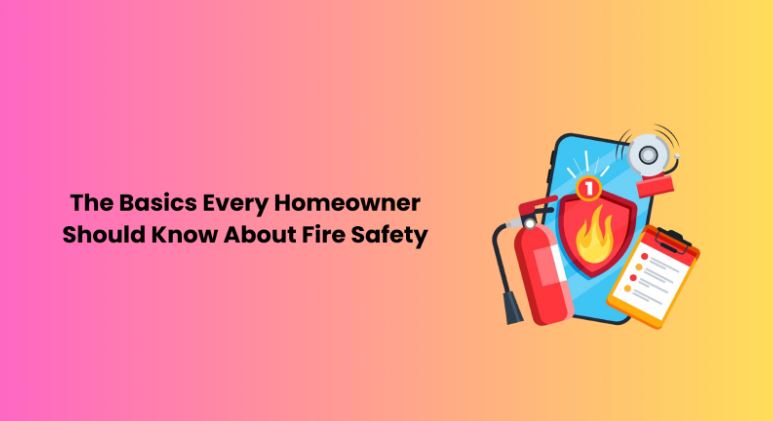The Basics Every Homeowner Should Know About Fire Safety

In this comprehensive tutorial, we will go over the fundamentals of fire safety that every homeowner should know. We’ve covered everything from knowing common fire threats to applying preventive measures and developing a family escape plan. We’ll also discuss the need for routine maintenance and how Fire Safety Certification may help ensure the safety of your house and enhance your knowledge of Fire Safety Awareness.
Understanding Common Fire Hazards at Home
Let’s examine a few of the most common fire risks that homeowners need to be mindful of:
- Electrical Appliances and Wiring: One of the main causes of home fires is electrical fires. There can be serious risks associated with malfunctioning appliances, overloaded circuits, and faulty wiring.
- Cooking Hazards: Another common area for possible fire occurrences is the kitchen. Cooking while unattended can quickly become disastrous, especially when hot oil or open flames are involved.
- Heating Equipment: Wood-burning stoves, furnaces, and space heaters are heating equipment that can catch fire in the winter.
- Open flames and candles: Although candles add a homely atmosphere, they can be hazardous if left to burn unattended.
- Smoking Materials: It’s important to be cautious if you or anybody else in your home smokes. Smoking inside can start fires, especially when done in bed.
Fire Prevention Measures
Smoke Alarms
Smoke alarms serve as your primary defence against fire. It is essential to install them in strategic locations throughout your home, such as in bedrooms, corridors, and the kitchen. Be sure to test your smoke alarms regularly and replace batteries annually. Replace the entire device every 10 years.
Fire Extinguishers
A fire extinguisher is an essential item for putting out small fires before they get out of control. Use them correctly and store them in easily accessible areas like the kitchen and garage. The PASS method (Pull, Aim, Squeeze, Sweep) can aid in your memory of using an extinguisher properly.
Safe Cooking Practices
To lessen the risk of a kitchen fire, practise safe cooking habits. Cooking should never be left unattended, and combustible things should be kept away from the hob. For emergencies, purchase a kitchen fire extinguisher and a fire-resistant blanket.
Electrical Safety
Examine your home’s electrical system regularly. Take quick action to resolve flickering lights, sparks, or wear indicators on wires and outlets. If you need any electrical improvements or repairs, avoid overloading circuits and contact a professional electrician.
Space Heaters and Fireplaces
Space heaters should be used cautiously, at least three feet away from flammable things. Check for an automated shut-off option in case they fall over. Fireplaces should be well-ventilated, and chimney cleaning and maintenance should be performed annually.
Creating a Family Fire Escape Plan
Planning and Drills
Create a thorough escape strategy for your house first. Discuss the primary and secondary escape routes from each room when you sit down with your family. Ascertain that everyone knows the plan and what must be done.
Escape Routes
Determining the major and secondary escape routes for every area in your home is crucial. Make sure these pathways are easily accessible and free of obstructions. If you live on an upper story and need a safe way out if the stairs are blocked, think about getting escape ladders that can be fastened to windows.
Meeting Points
Decide on a safe distance away from your residence for a meeting place outside. Emphasise the significance of remaining at this meeting spot until everyone safely leaves the area.
Involving Children and Pets
Consider the needs of any young children or pets in your escape strategy. Teach youngsters how to unlock doors and windows, and have an adult accompany them during exercises. Make certain that the escape strategy is child-friendly and simple to understand. Prepare a strategy to secure or evacuate pets safely during a fire emergency.
Importance of Regular Maintenance
Your home’s fire safety is mostly dependent on routine maintenance. Periodic inspections and modifications are necessary for your fire safety systems and equipment, just like for any other part of homeownership. For efficiently preventing and responding to fire dangers, smoke alarms, fire extinguishers, electrical systems, and heating equipment must all be in ideal operating condition.
Conclusion
Understanding common fire threats and putting preventative measures in place, such as smoke alarms, fire extinguishers, and safe cooking and electrical practices, are some important steps in lowering the risk of fires. Having a practised family fire escape plan ensures a quick and safe response in case of fire.
